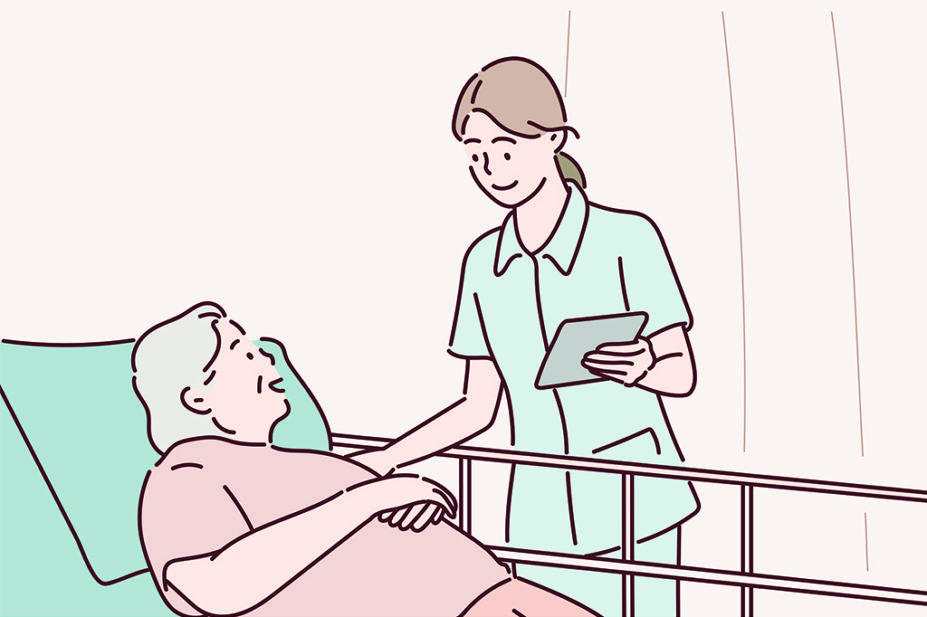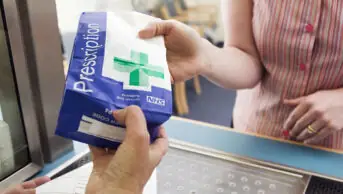
Shutterstock.com
The ‘Care homes independent pharmacist prescriber study’ (CHIPPS), published in the BMJ on 14 February 2023, built on the findings of several existing research papers. The ‘Care homes’ use of medicines study’ (CHUMS) had already clearly demonstrated the need for better medicines management in care homes and resulted in a government request for interventions to address it[1,2]. Cochrane reviews had also showed that the evidence for clinical effectiveness for pharmacists working in care homes and for the process of medication review itself was limited[3,4].
In addition, Bruhn et al. published a study in 2013 involving pharmacist independent prescribers (PIPs), which had demonstrated both acceptability and effectiveness[5].
Our plan, therefore, was simple: place PIPs into care homes with a remit to improve medicines management and evaluate their effectiveness in a robust manner.
We identified several potential benefits; doctors would no longer have to authorise monthly prescriptions or respond to numerous medicines-related enquiries from care homes, and care home managers would have a medicines expert to hand at all times. Furthermore, the pharmacists would no longer have to seek authorisation each time they wanted to alter a patient’s medicines.
Owing to the nature of the work required, we applied for a National Institute of Health Research (NIHR) programme grant for applied research and secured £2m funding to start the project in 2014.
As we now know, the final intervention was found to be safe, well-received and significantly reduced drug burden. Additionally, when accounting for confounding factors, all secondary outcome measures were largely positive. However, from a clinical perspective we failed to demonstrate a reduction in our primary outcome measure of falls. As we assiduously followed Medical Research Council guidance on how to develop and evaluate complex interventions of this nature, we know why this happened and, in future studies, we would only include residents at risk from falls and extend the follow-up period to 12 months[6,7].
One thing we did not report in the final paper was the fact that while the relatively intensive intervention was shown to have negligible impact on NHS costs overall, it was unlikely to be cost-effective by government standards in its current format. Quality-adjusted life year (QALY) gain marginally favoured the control arm even though gain in quality of life in isolation favoured the intervention at six months. A longer follow up would therefore have provided a better estimate.
The aim of this paper is to summarise the learning from CHIPPS for the benefit of pharmacy practitioners and researchers.
The eventual service
To develop the service, we spent a lot of time with stakeholders — including care home residents, staff and managers, GPs, community pharmacists and primary care pharmacists — to find out what they wanted from the intervention, what the role of the PIP would be and what training would be needed.
It soon became clear that the PIPs would need a broad remit of responsibilities, going far beyond medication reviews. Care home managers wanted help with all aspects of medicines management and residents with capacity and their relatives wanted to be involved in care decisions. Community pharmacists wanted effective communication — most notably, timely notification of medication changes. GPs wanted evidence that the intervention was safe and would reduce their workload. Primary care pharmacists who worked in care homes described how PIPs could effectively reduce medicines wastage, save money on prescribing and improve resident care[8].
Both GPs and care home managers agreed that the PIPs must be integrated into their teams; there was a clear view from care homes, which became accepted by NIHR nationally during the CHIPPS study period, that services had to be delivered ‘with’ them and not ‘to’ them[9].
To ensure that the PIPs would operate safely, the main training recommendation was for them to learn how to manage the complexity seen in care home residents. The training also needed personalising, as PIPs entering the project could range from newly qualified pharmacists with no care home experience, to pharmacists who had been in a similar role within a care home for several years.
The training
We reviewed the literature to identify the training previously reported for pharmacists in care homes and the activities undertaken by them in this setting[10]. The ‘activity’ information was used in the creation of a draft competency framework, which was presented to stakeholders in bespoke focus groups and finalised with an expert consensus panel[11].
Interestingly, very little training for the role has been previously reported and consequently, there were no materials that could be used for training PIPs for their role in care homes.
Given our time constraints and individual needs of the PIPs, we decided to limit face-to-face training to cover the main concerns and potential benefits identified. All remaining learning was self-directed. Using our competency framework, PIPs agreed a personal development plan (PDP) with their mentor and then had six weeks to address their main learning needs[11]. We provided links to nationally available information sources for PIPs, such as guidelines, checklists and toolkits. PIPs were encouraged to use the activities associated with their PDP as an opportunity to integrate with both care home and medical practice teams.
The eventual training programme for the role was 1.5 face-to-face days with expert geriatricians and care home pharmacists. An additional half-day included an explanation of the trial process and how to complete pharmaceutical care plans, which were required to enable the research team to monitor PIP activity. PIPs were provided with five days’ funding to attend study days and complete their PDPs. Before providing the CHIPPS intervention, all PIPs were required to undertake a viva with an expert GP and mentor before being signed-off as ‘competent’[11].
Outcome measurement
Following accepted guidance on identifying the most appropriate outcome measure for our trial, we identified 13 outcomes for our core outcome set, categorised into seven domains: medication appropriateness, adverse drug events, prescribing errors, falls, quality of life, all-cause mortality and hospitalisations[12,13].
We only included panellists from the UK and did not include patients, although, on reflection, a question remains regarding the final appropriateness of our recommendations for international audiences.
Feasibility study
We performed our feasibility study as a ‘before and after’ study, with one care home, one GP and one PIP in each of the four geographical areas in which the full trial would be delivered. Recruitment was initially undertaken via GPs as they were able to identify suitable care homes. The identification of suitable PIPs posed the biggest challenge because of the limited number on the register at the time (2015/2016). Within each site we were able to recruit, on average, 20 residents — our original target — but agreed to change this to an average of 20 per PIP to enable flexibility.
The whole training process was successfully completed by all PIPs involved in the study and was extremely well-received as a model of learning and development. Additional identification of the need to demonstrate leadership skills in the competency framework was the only element requiring amendment[14].
The PIPs reported that the weekly session was sufficient for delivery of the intervention objectives. And, while initial set-up required more time, they envisaged that once up and running, this time allocation would be appropriate. They did however, report that the pharmaceutical care plans were overly complex, and these were consequently refined and simplified.
Data collection was feasible but some of the tools used were found to either provide information of limited use or of limited objectivity for research purposes[15,16]. We also agreed that ‘number of medicines’ was not an ideal outcome as the direction of change could not be deemed to be positive or negative from a clinical perspective. Consequently, we were able to reduce the data collection burden in the main trial.
Owing to the burden of recruitment, training and setting up sites for research, the research team agreed to deliver the main trial in four phases, rather than one i.e. recruit five or six triads of GPs, PIPs and care homes with 20 residents at a time, such that data collection and recruitment did not overlap between phases.
Safety monitoring of the PIP-led intervention included independent review of a random selection of pharmaceutical care plans in the trial, provision of a ‘concerns’-reporting hotline for GPs and care home managers and GP review of all resident hospitalisations and deaths. This was found to be acceptable and proportionate, and no concerns were identified
The main question for the team, arising from the feasibility study, was which primary outcome measure should be used for the main trial.
The preferred choices were hospitalisations, falls and quality of life; data could be collected for all three and they were all likely to be impacted by the PIP activities. However, power calculations showed that we would need thousands of residents if we wanted to demonstrate a meaningful difference in hospitalisations or quality of life, leaving fall rate as the only possible option. A systematic review of pharmacist interventions in care homes, published in 2019, supported this decision[17].
Main trial
Over a two-year period (2018–2020), we recruited the required number of residents for the study so it was appropriately powered on completion[18,19]. Owing to COVID-19, final data from a couple of homes was not obtained once the first lockdown was mandated; however, this did not significantly prolong the study.
A small number of PIPs attended and completed the training but did not deliver the intervention[14]. Their residents remained in the intervention arm as is usual within an ‘intention to treat’ analysis.
Analysis of PIP interventions, recorded within the pharmaceutical care plans, showed that deprescribing was the main activity and that this was most likely to occur if PIPs were located within medical practices[20,21].
Interestingly, only 25% of PIP interventions were found to have the potential to reduce falls and 8% increased them[20]. Consequently, falls may not have been the most ideal outcome measure as it did not capture all PIP activity[20].
The intervention was generally well delivered and received by all involved. Contextual factors affected implementation and effectiveness, and effective and regular communication at all levels in the team were central to success.
Overall, participants believed that the PIP activities improved medication safety and resident quality of life[20].
No safety concerns were identified, which provides further reassurance for the training and assessment process but also for GPs who were being asked to hand over partial responsibility for the care of complex, and often fragile, patients. It is unusual for pharmacy practice researchers to monitor for safety concerns, but as PIPs are expected to operate autonomously, methods for doing this should be included in all similar trials.
When considering all NHS costs, the PIP intervention represented a negligible cost but was not cost-neutral. For trial purposes, our PIPs were funded for one session a week for six months to provide care for an average of 20 residents and sometimes across more than one care home. In reality however, they would look after entire homes medicines management and tailor their time accordingly, so intensity could reduce. Furthermore, some of the activities undertaken by the PIPs within the trial would ideally be undertaken by pharmacy technicians to improve efficiency.
Summary
From conversations with stakeholders, it was clear that they were very open to receiving support from PIPs, provided it was from within their teams. The PIP role was sufficiently new at the time, that they also wanted reassurance that, in working autonomously, PIP activities would be safe.
Our training package, which only required 1.5 days of face-to-face training, was evidence based, pragmatic and very well received. Independent competency assessment provided reassurance to GPs and confidence to PIPs for delivery of the role. This confidence was further enhanced by the intensive monitoring which identified no safety concerns resulting from the intervention.
Locating PIPs within medical practices who look after care homes, working in teams with pharmacy technicians and in partnership with care homes should improve intervention acceptability, efficacy and efficiency.
This study supports the integration of effectively trained PIPs into care homes to provide pharmaceutical care and improve medication appropriateness. Future work is required to identify the best model of delivery and how to optimise implementation.
Acknowledgements
We would like to thank all individuals who contributed to the CHIPPS five-year project at any stage, including our patient and public involvement team members, PIPs, their mentors, those involved in training, care home managers and staff and general practice teams.
The research was funded by the National Institute for Health and Care Research (NIHR), through the Programme Grant for Applied Research funding stream, RP-PG-0613-20007. The views expressed are those of the author(s) and not necessarily those of the NIHR or the Department of Health and Social Care.
- 1Barber ND, Alldred DP, Raynor DK, et al. Care homes’ use of medicines study: prevalence, causes and potential harm of medication errors in care homes for older people. Quality and Safety in Health Care. 2009;18:341–6. doi:10.1136/qshc.2009.034231
- 2The use of medicines in care homes for older people ALERT. Department of Health 2010.
- 3Alldred DP, Kennedy M-C, Hughes C, et al. Interventions to optimise prescribing for older people in care homes. Cochrane Database of Systematic Reviews. 2016;2016. doi:10.1002/14651858.cd009095.pub3
- 4Cochrane Database of Systematic Reviews. doi:10.1002/14651858
- 5Bruhn H, Bond CM, Elliott AM, et al. Pharmacist-led management of chronic pain in primary care: results from a randomised controlled exploratory trial. BMJ Open. 2013;3:e002361. doi:10.1136/bmjopen-2012-002361
- 6Craig P, Dieppe P, Macintyre S, et al. Developing and evaluating complex interventions: the new Medical Research Council guidance. BMJ. 2008;:a1655. doi:10.1136/bmj.a1655
- 7Moore GF, Audrey S, Barker M, et al. Process evaluation of complex interventions: Medical Research Council guidance. BMJ. 2015;350:h1258–h1258. doi:10.1136/bmj.h1258
- 8Lane K, Bond C, Wright D, et al. “Everyone needs to understand each other’s systems”: Stakeholder views on the acceptability and viability of a Pharmacist Independent Prescriber role in care homes for older people in the UK. Health Soc Care Community. 2020;28:1479–87. doi:10.1111/hsc.12970
- 9Advancing Care – Research with Care Homes. National Institute for Health Research 2017. doi:10.3310/themedreview-001931
- 10Wright DJ, Maskrey V, Blyth A, et al. Systematic review and narrative synthesis of pharmacist provided medicines optimisation services in care homes for older people to inform the development of a generic training or accreditation process. International Journal of Pharmacy Practice. 2019;28:207–19. doi:10.1111/ijpp.12591
- 11Wright DJ, Blyth A, Maskrey V, et al. Development and feasibility testing of an evidence-based training programme for pharmacist independent prescribers responsible for the medicines-related activities within care homes. International Journal of Pharmacy Practice. 2021. doi:10.1093/ijpp/riab025
- 12COMET Initiative: Core Outcome Measurements in Effectiveness Trials. COMET Initiative. https://www.comet-initiative.org (accessed Feb 2023).
- 13Millar AN, Daffu-O’Reilly A, et al. Development of a core outcome set for effectiveness trials aimed at optimising prescribing in older adults in care homes. Trials. 2017;18. doi:10.1186/s13063-017-1915-6
- 14Birt L, Dalgarno L, Bond CM, et al. Evaluation of a training programme for Pharmacist Independent Prescribers in a care home medicine management intervention. BMC Med Educ. 2022;22. doi:10.1186/s12909-022-03575-5
- 15Ettema TP, Dröes R-M, de Lange J, et al. QUALIDEM: development and evaluation of a dementia specific quality of life instrument––validation. Int. J. Geriat. Psychiatry. 2007;22:424–30. doi:10.1002/gps.1692
- 16O’Mahony D, O’Sullivan D, Byrne S, et al. STOPP/START criteria for potentially inappropriate prescribing in older people: version 2. Age and Ageing. 2014;44:213–8. doi:10.1093/ageing/afu145
- 17Lee SWH, Mak VSL, Tang YW. Pharmacist services in nursing homes: A systematic review and meta‐analysis. Br J Clin Pharmacol. 2019;85:2668–88. doi:10.1111/bcp.14101
- 18Bond CM, Holland R, et al. Protocol for the process evaluation of a cluster randomised controlled trial to determine the effectiveness and cost-effectiveness of independent pharmacist prescribing in care home: the CHIPPS study. Trials. 2020;21. doi:10.1186/s13063-020-04264-8
- 19Bond CM, Holland R, et al. Protocol for a cluster randomised controlled trial to determine the effectiveness and cost-effectiveness of independent pharmacist prescribing in care homes: the CHIPPS study. Trials. 2020;21. doi:10.1186/s13063-019-3827-0
- 20Birt L, Dalgarno L, Wright DJ, et al. Process evaluation for the Care Homes Independent Pharmacist Prescriber Study (CHIPPS). BMC Health Serv Res. 2021;21. doi:10.1186/s12913-021-07062-3
- 21Alharthi M, Scott S, Alldred DP, et al. Pharmacist‐independent prescriber deprescribing in UK care homes: Contextual factors associated with increased activity. Brit J Clinical Pharma. 2022. doi:10.1111/bcp.15643


